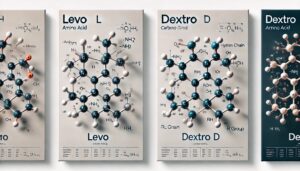CHINA’S ACHILLES HEEL
by Jeemes Akers
“If there is to be a war [between China and the United States], it will not arise from Western outrage at human rights violations in Xinjiang, or Chinese outrage at Western outrage, or cyber-crime, or technology theft, or currency manipulation, or security crackdowns in Hong Kong, or indignities visited upon the Filipinos or the Vietnamese or the Australians. It will arise from acute economic pain, inflicted on China by actions of the United States to deprive them of the most essential physical resource of the 21st century: semiconductors.”
George Calhoun
Article “War With China?”[1]
“The ‘new oil’ in the tech world is semiconductors.”
Kenneth Rapoza[2]
“For Beijing, this [attaining self-sufficiency in the semiconductor industry]is a multiyear project, given China’s late entry into the industry, the huge and growing capital costs associated with manufacturing, shortages of trained personnel, and the fast-moving pace of innovation that keeps the cutting edge moving forward. Until recently, these factors have kept Chinese companies years and even decades behind leading global companies. To date, China’s progress has been highly uneven and inconsistent across the many subsectors that make up complex semiconductor production value chains. This dynamic will continue to roil global supply chains in the semiconductor and broader technology sector over the coming decade, with significant collateral effects, both intended and unforeseen.”
Paul Triolo
“The Future of China’s Semiconductor Industry”[3]
Why are semiconductors (chips and microchips) such a hot topic these days? As I write this paragraph (September 23, 2021), the White House is hosting a meeting of leading American and foreign business leaders to discuss the global shortage of semiconductors and the importance of the semiconductor industry to the U.S. economy, our country’s national security interests and our future role as the leader of global technology.[4] The three decade domination of U.S. companies in the semiconductor industry—that’s why we call it “Silicon Valley” after all—is slipping: in 1990 we controlled 37 percent of global semiconductor manufacturing, but last year (2020) only 12 percent, according to statistics provided by the Semiconductor Industry Association.[5] Much of the ground has been lost to companies in Taiwan, Japan, South Korea and China. To make matters worse, industrial leaders now are being squeezed by semiconductor plant shutdowns related to the spread of the Covid-19 “Delta” variant. In the auto industry, for example, the number of semiconductors in a modern vehicle can exceed 1,000.[6]
But its more than automobiles. In today’s world, microchips power just about everything we use and semiconductors are essential to everything from cellphones, to sensors, to 5G, to self-driving vehicles, to the IoT, to satellites, as well as to drones and other modern weapons of warfare.[7] That’s why China’s five-year plan for building the chip industry gets the same strategic attention Beijing once gave to building its atomic bomb.[8]
And that brings us to the topic of this missive.
Let’s assume for a second the unimaginable, but for some the inevitable: a future war between the United States and China. The question of how such a conflict would begin has been the subject of several recent books, including two that have become popular with Pentagon planners (as I described in my recent missive on AI and the coming war).[9] The two books–2034: A Novel of the Next World War[10] and Ghost Fleet: A Novel of the Next World War by P. W. Singer and August Cole (2015)—are both techno-thrillers portraying a future war pitting a declining United States against a rising China. The two books are similar in portraying the U.S. conventional warfare advantage being neutralized by Chinese technological breakthroughs (in 2034 a new, but never defined, algorithmic-cyber capability enables Beijing’s leaders to blackout portions of the U.S., intercept naval encrypted communications, and shut down defensive weapons’ systems; in Ghost Fleet a secret space weapon enables a new Chinese military leadership to launch a preemptive strike in the Pacific after the U.S. Defense Department’s constellation of satellites over Asia are blinded).
Why do I mention the books? Both assume what has become conventional wisdom—that China will overtake the United States over the near-term on all major technological fronts, leaving the U.S. behind as Beijing’s leaders move toward global domination. With this comes a corollary assumption: China’s top-down authoritarianism gives it a future advantage in earmarking large amounts of money for targeted technology areas such as artificial intelligence, robotics, quantum computers, space exploration, and subatomic research.
What is the problem with this logic?
It ignores one basic fact: China’s future technological trajectory has a very real Achilles heel.
Simply put, The West still has a stranglehold over global semiconductor (chips and microchips) design, fabrication (“fab”) and production. As Chinese Vice Premier Liu He told an assembly of China’s top scientists in May 2021: “For our country, this technology [semiconductors] is not just for growth. It’s a matter of survival.”[11]
In an excellent recent article, George Calhoun asserts this weakness will become the most likely cause of a possible future U.S.-Sino war. How does he arrive at this conclusion? Calhoun suggests that China in 2021 finds itself in much the same bind that Imperial Japanese leaders found themselves in in 1941.
But since no one studies history anymore, his reasoning may seem far-fetched for some.
Let’s go back to the 1940s. Pressure on Japan’s totalitarian military leaders by then-U.S. President Franklin D. Roosevelt (in the form of an oil embargo—then the most important strategic commodity) prevented Tokyo’s leaders from achieving their geostrategic objectives in Asia. Indeed, after the war, Emperor Hirohito was quoted by one of his wartime aides as saying that Japan went to war with the United States because of oil—and lost to the United States—because of oil. One can argue, perhaps, that Calhoun’s exclusive focus on the economic aspects of this one strategic commodity may be an oversimplification of a complex strategic military decisionmaking process. But it makes for an interesting comparison.
Calhoun also notes that Japanese efforts to break the stranglehold by developing a homegrown synthetic oil industry—converting coal to oil—failed[12] (before F.D.R.’s embargo, Japan relied on the U.S. for 88% of its oil consumption). That left the Tokyo’s leaders with the option of military expansionism to control oil and other raw materials in formerly French possessions in Indochina, the Dutch East Indies (Indonesia today) and coastal China.
The point: in 1941, Japan was in a position of acute strategic vulnerability.
Calhoun argues that China is in a similar bind today and this is the most likely path to future war. Today, semiconductors occupy the place oil held some eight decades ago. In 2020, China spent $350 billion on chips based largely on Western technology and, again, China’s modern tech economy runs on silicon.[13] (This amount, by the way, is more than China spent on imported oil.) As Calhoun observes, today China buys 60% of the world’s chip production, 90% of which is sourced from outside China or produced domestically by foreign manufacturers such as Intel.[14]
Chinese leaders know the problem is growing and the gap regarding this strategic commodity is widening. There is also a growing qualitative gap, especially in the area of the “fabless” IC sector, which drives chip design, the innovative sector pushing forward the digital economy. As a result, many of China’s semiconductor fabrication facilities lag four to five technology generations behind the leaders in the field.[15]
At the same time, despite China’s much-ballyhooed central decisionmaking—and the seeming success of its “moonshot” approach by using massive direct public investments in other technology areas—it has been unable to compete in this strategic commodity. Beijing’s leaders have repeatedly announced new policy initiatives to catch up in the semiconductor race. China’s more than 20-year track record of chipmaking has been littered with “unfulfilled promises, stillborn projects and government waste.”[16] As one expert notes, the semiconductor industry is very market oriented and isn’t like launching a space station or building a giant atom smasher.[17]
To make matters worse for Beijing’s leaders, beginning with former President Trump—and continued thus far by the Biden administration—there has been a steady tightening of the semiconductor noose, starting with Huawei and ZTE. The IC pipeline is being choked off. Why? A long history of unfair Chinese trade policies, technology theft, increasing national security risks and geopolitical rivalry.
How serious is this getting? In February 2021, key executives from leading American companies such as Intel, Nvidia, Broadcom, Western Digital, IBM and Qualcom met with President Biden and urged him to invest in the future of semiconductors.[18] It was a technology race we couldn’t afford to lose. In Bloomington, MN, the new SkyWater Technology Foundry was built—the first semiconductor “fab” to open in the US in a generation.[19] The U.S. Senate has earmarked $52 billion—under the Chips for America Act—to encourage domestic semiconductor investment (the House has yet to act on the bill).[20] Recently, the leaders of the United States, Japan, India and Australia agreed to take steps to build secure semiconductor supply chains when they met in Washington in late September 2021, according to the Nikkei Business Daily. The agreement clearly targets China’s most obvious weakness.[21] Squeezing the semiconductor supply chain is the latest wrinkle in efforts to decouple the supply chains linking the world’s two biggest economies. Indeed, technology-related foreign direct investment (FDI) between China and the US dropped by 96 per cent from 2016 to 2020, posing a significant challenge to Beijing which has invested heavily in technology and supply chain independence, according to Boston-headquartered consultancy Bain & Company.[22]
At the same time, the unique nature of profit-driven private business models in the United States and elsewhere in the West will make it difficult to maintain a united front on the matter of controlling semiconductor sales to China. Last week, for example, representatives of four key government security entities could not agree on whether to place a Chinese-linked telecommunications company on the Commerce Department’s entity list, which bars exports of U.S. technology to the sanctioned firm without a department license. The company, Honor, is a recent spin-off of sanctioned Chinese firm Huawei.[23] Soon after Huawei sold Honor, several U.S. companies began striking deals to sell chips to the new company. Qualcomm, based in California, is selling Honor a high-tech chip that the Chinese company is using in its newly launched 5G smartphones. Qualcomm overall is supplying technology for three new Honor phones, Qualcomm’s chief executive said during a July conference call with investors. The Department of Treasury, in particular, reportedly has declined to put several PRC technical surveillance firms on the SDN list.[24]
All of this reminds me of a famous quote by Bolshevik leader Vladimir Lenin (and one which Communist leaders in China and elsewhere are fond of quoting): “When the time comes to hang the capitalists, the Capitalists themselves will sell the rope for that.”
Anything for a profit.
Even semiconductors.
So, what is the future likely to hold? It doesn’t take a crystal ball to predict that pressure on China’s leaders will steadily mount due to this acute strategic vulnerability. Just as important, control of the design and production of increasingly sophisticated microchips is one of the few remaining technology cards remaining in the West’s playing hand these days.
Likewise, you need no gift of prophecy to see that Beijing’s leaders will do everything possible to close the semiconductor gap.
Calhoun suggests the tensions growing out of the West’s effort to capitalize on this techno-vulnerability may lead to future war. Such a trajectory, of course, will not happen in a vacuum. There will be, no doubt, several opportunities to avert open conflict. Moreover, even now a myriad of other factors are swirling in the background that will influence any future decision to go to war. Chief among these is the nature and intensity of increasing trade friction with the U.S. and the growing technological and geopolitical rivalry between the two global superpowers. Then there is the ongoing strategic dance with Taiwan highlighted by Beijing’s steady military buildup and overflights in the Strait. (Perhaps it is worth noting that Taiwan is home to several of the world’s most robust and modern semiconductor companies.) Some argue that a future invasion of Taiwan moved a step closer by the recent removal of a threat on Beijing’s flank by its strong-arm tactics in Hong Kong.
Perhaps most important of all, Beijing’s quest to achieve semiconductor self-sufficiency has become entangled in President Xi Jinping’s domestic political quest for an unprecedented third term as paramount leader in 2022. One highly publicized prong of Xi’s power grab is his “common prosperity” campaign that includes a crackdown on China’s private sector high-tech titans. According to at least one prominent China watcher, Xi’s efforts are being driven by three basic factors: ideology, demographics and decoupling from the West.[25] The bottom line: Xi can’t be sure of the loyalty of China’s high tech titans—who’ve become rich and famous—because they sit on large stores of data (which may be eventually used against him).[26] At the same time, Xi seems to be realigning the country’s tech sector to favor state-led developments in the areas he cares about, such as creating breakthrough technologies in AI and semiconductors.[27]
But it is a risky proposition for Xi. In 2020, China’s private companies accounted for 76.6% of China’s overall R&D expenditures (followed by government-run research institutions and universities—both hit hard by the pandemic).[28] So, while Xi’s moves may be cementing his control among the Party cadres, he is also crippling the very entities within the technology sector most capable of breakthrough innovations in such critical areas as semiconductors.
To add to the mix, a number of possible wild card events lurk just over the horizon: the spreading economic contagion of Evergrande’s collapse; pandemic variants; natural disasters; demographic-fueled nationalism; foreign policy missteps; and reactions to Chinese overreach by neighbors in Japan, India and Southeast Asia. Just to name a few.
Finally, is there a technological breakthrough on the horizon that will render the West’s semiconductor stranglehold a moot matter? Tomorrow’s world will feature exponentially increasing costs of design and verification costs versus semiconductor scaling, FinFETs, 2.5D/3D assembly, chiplets and interposers.[29] Moreover, future replacements for silicon are already showing some promise: such as graphene (a 2D conductive material—microchips using graphene can sustain many more transistors than silicon), gallium nitrate (better performance in high energy and high heat applications than silicon, but cumbersome and expensive to produce), and perovskites.[30] And these developments do not include the possibility of game-changing spillover discoveries in technologies such as biogenetics, superconductors or post-digital quantum breakthroughs.
Then the question becomes: would a technological replacement for semiconductors make a future war more or less likely?
[1] George Calhoun, “War With China? The Economic Factor That Could Trigger It,” Forbes, Sep 12, 2021.
[2] Kenneth Rapoza, “China Turns Semiconductors Into The ‘New Oil’ While GM Runs Out Of Chips,” Forbes, Feb 7, 2021.
[3] For the best in-depth discussion of China’s semiconductor industry today, see Paul Triolo, “The Future of China’s Semiconductor Industry,” American Affairs, Spring 2021, Vol. V, Number 1. Triolo was a former colleague of mine in the intelligence community and a fellow basketball player: he is one of our country’s leading experts on all facets of Chinese technology and now is head of the geotechnology practice at the Eurasia Group and a senior adviser at the Paulsen Institute.
[4] Alex Leary, “Supply-Chain Crunch, Chip Shortage Focus of White House Meeting,” New York Times, Sep 23, 2021.
[5] Ibid.
[6] Ibid.
[7] Calhoun, “War with China;” Arthur Herman, “Biden, Semiconductors, And America’s Future,” Forbes, Feb 17, 2021.
[8] Herman, “Biden, Semiconductors.”
[9] Jeemes Akers, “Reluctant Missives: The Future of War (Part Two), Aug 2021.
[10] Elliot Ackerman and Admiral James Stavridis, 2034: A Novel of the Next World War, New York: Penguin Press, 2021. The authors’ combined military background made the novel’s scenarios realistic and plausible. See also, Howard W. French, “’2034’ Review: Navigating a Disaster,” WSJ, May 2021.
[11] Edwin Chan and Yuan Gao, “China Is Still Searching For a Chipmaking Advance That Will Change The Game,” Bloomberg Businessweek, Jul 27, 2021.
[12] “Synthetic fuel production in prewar and World War II Japan: A case study in technological failure,” Annuals of Science, 1993 (cited in Calhoun, ibid.)
[13] Again, see Triolo, “The Future of China’s Semiconductor Industry.”
[14] Calhoun, “War with China.”
[15] The recent announcement by China’s Semiconductor Manufacturing International Corp. (SMIC) that a new IC facility will be built in Shanghai to produce integrated circuits using 28-nanometer technology, still leaves it at least a decade behind Taiwan’s TSMC (scheduled to bring out a 3 nanometer chip next year).
[16] Business Weekly article cited by Calhoun.
[17] Iibid.
[18] Herman, “Biden, Semiconductors.”
[19] Ibid.
[20] Leary, “Supply-Chain Crunch.”
[21] Kioyshi Takenaka, “’Quad’ countries to agree on secure microchip supply chains—media,” Reuters, Sep 18, 2021.
[22] The Bain & Co.’s latest technology report for 2021 was released on Sep 20, 2021. See, Laura Zhou, “US-China technology FDI crashes but decoupling is “not imminent,’” South China Morning Post, Sep 21, 2021.
[23] In August 2021, several GOP lawmakers appealed to the Commerce Department saying Huawei’s spin-off Honor amounted to “export control evasion.” They further expressed a concern that if US export control guidelines were limited only to discreet entities, rather than networks and ecosystems, Beijing could outmaneuver US sanctions. Shenzehn-based Huawei sold off Honor last year, after the US imposed sanctions in 2019, because the parent company lacked access to semiconductors and Google software needed to build the latest generation of smartphones. For further discussion, see Ellen Nakashiwa and Jeannie Whalen, “Key security agencies split over whether to blacklist former Huawei smartphone unit,” The Washington Post, Sep 19, 2021.vade
[24] See Item#5, “US government discord over tech sanctions: Key security agencies split over whether to sanction a Huawei spin-off Honor, by placing it on Commerce blacklist,” in Bill Bishop’s China-watching blog Sinocism (citing Washington Post article), Sep 21, 2021.
[25] Kevin Rudd, “What Explains Xi’s Pivot to the State?” Wall Street Journal (opinion), Sep 19, 2021.
[26] Jennifer Conrad, “China Cracks Down On Its Tech Giants. Sound Familiar?” WIRED, Jul 29, 2021.
[27] Ibid.
[28] Xinmei Shen, “China sees slower R&D growth in 2020 as government spending on science and technology fell amid the Covid-19 pandemic,” South China Morning Post, Sep 22, 2021.
[29] Steven Leibson, “Racing to the End of Moore’s Law: The New World Semiconductor Order,” eejournal.com, Nov 21, 2018.
[30] See, among others, “Alternatives to Silicon: Graphene, Gallium Nitride, and Perovskites,” findlight.net, Jul 19, 2020.



